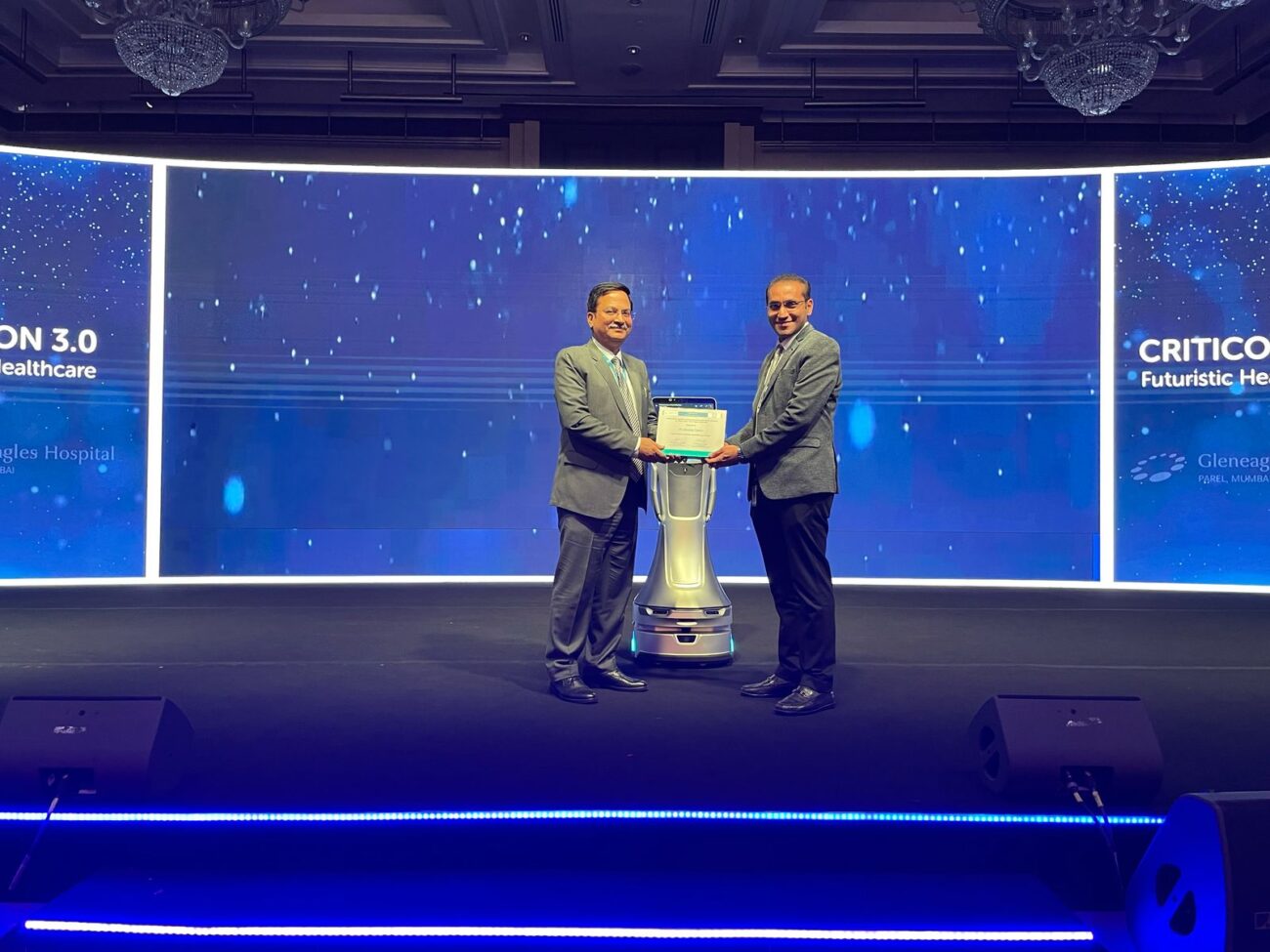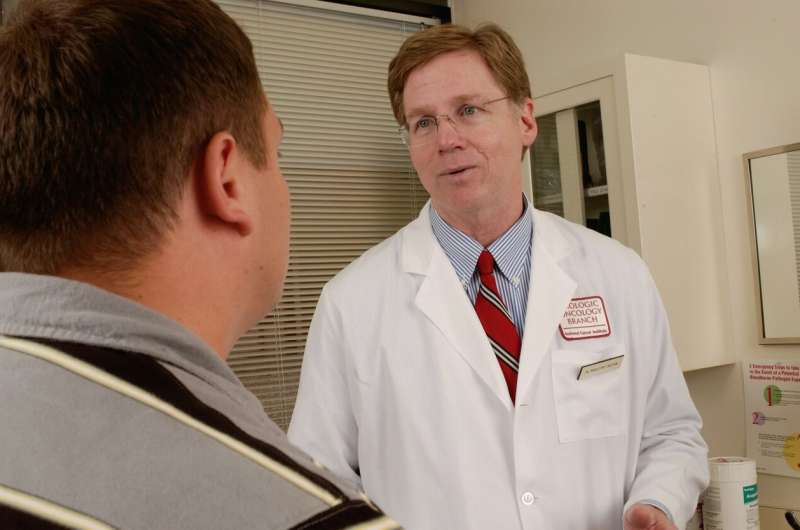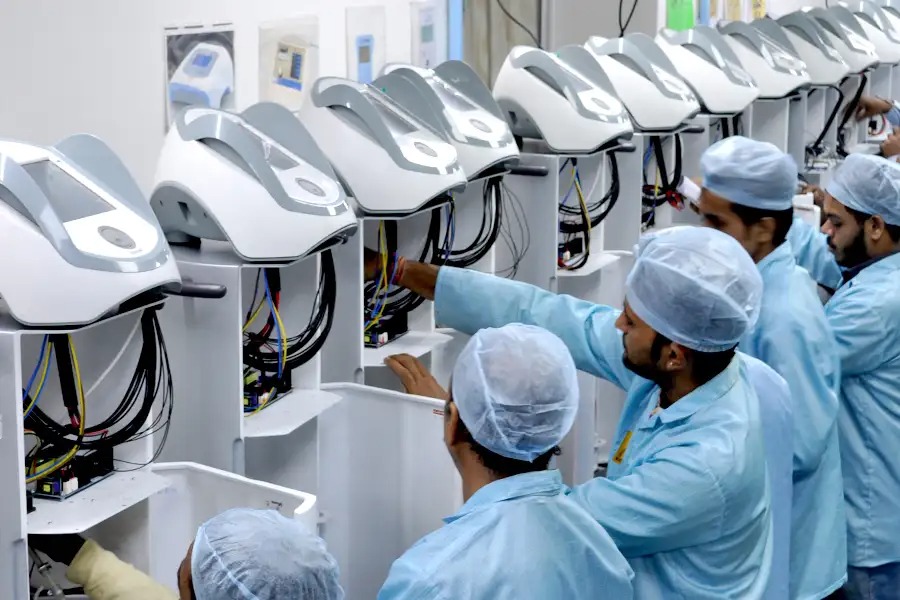𝐁𝐮𝐝𝐠𝐞𝐭 𝐞𝐱𝐩𝐞𝐜𝐭𝐚𝐭𝐢𝐨𝐧𝐬 𝐟𝐫𝐨𝐦 𝐭𝐡𝐞 𝐇𝐞𝐚𝐥𝐭𝐡 𝐓𝐞𝐜𝐡/𝐇𝐞𝐚𝐥𝐭𝐡𝐜𝐚𝐫𝐞 𝐒𝐞𝐜𝐭𝐨𝐫 𝐟𝐫𝐨𝐦 𝐭𝐡𝐞 U𝐧𝐢𝐨𝐧 B𝐮𝐝𝐠𝐞𝐭 2024-2025
Dr. Minnie Bodhanwala CEO Wadia Hospital Mumbai. As India strives to become a $5 trillion economy, its healthcare sector is poised for a significant transformation. With a growing population and an increasing burden of non-communicable diseases, India's
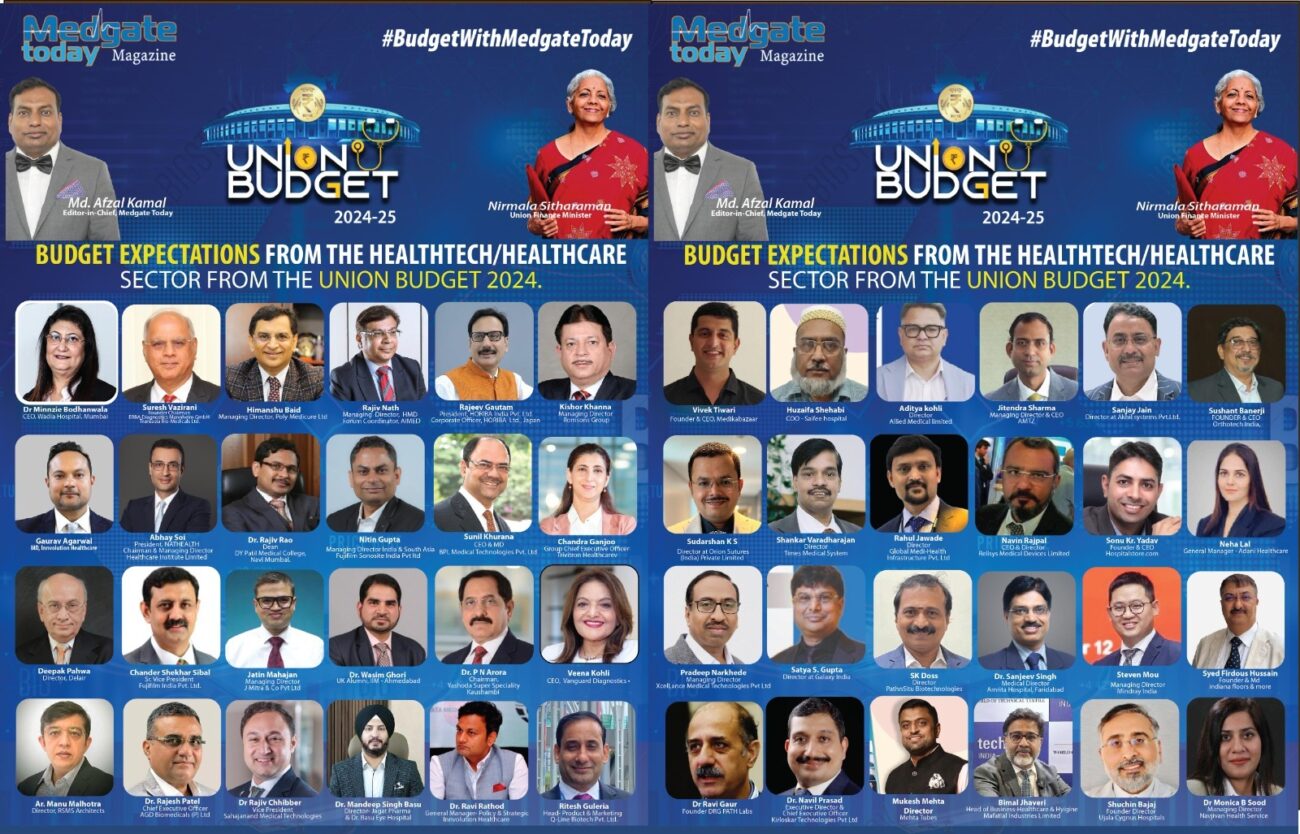

Dr. Minnie Bodhanwala
CEO Wadia Hospital Mumbai.
As India strives to become a $5 trillion economy, its healthcare sector is poised for a significant transformation. With a growing population and an increasing burden of non-communicable diseases, India’s healthcare system faces numerous challenges. However, this also presents an opportunity for the country to leapfrog traditional healthcare models and embrace innovative solutions that prioritize accessibility, affordability, and quality.
To address the critical shortfall in healthcare infrastructure and skilled professionals, particularly in rural areas, the government must prioritize investments in rural healthcare infrastructure, incentivize healthcare professionals to work in these areas, and promote public-private partnerships to establish healthcare facilities in underserved regions. Furthermore, encouraging research and development of innovative healthcare solutions tailored to Indian needs will be crucial in addressing the country’s unique healthcare challenges.
Enhancing the healthcare workforce is also essential, and this can be achieved by investing in healthcare education and training infrastructure, developing programs to retain and attract healthcare talent in India, and enhancing the skills and knowledge of existing healthcare professionals through continuing education and training programs. Improving access to affordable healthcare services, especially in rural areas, is critical to achieving universal healthcare, and this can be achieved through schemes like Ayushman Bharat Yojana, promoting low-cost healthcare technologies, and encouraging public-private partnerships.
Encouraging domestic manufacturing of medical supplies and equipment will also be essential in reducing costs and making healthcare more accessible. Emerging sectors like health insurance and medical tourism present avenues for industry growth and economic resilience, and India can establish itself as a global leader in healthcare innovation and delivery by expanding coverage and penetration of health insurance, promoting India as a medical tourism destination, and developing infrastructure and services to cater to international patients.
Ultimately, India’s healthcare vision for FY 2025 must prioritize the needs of its citizens, foster a culture of innovation and collaboration, and establish the country as a global leader in healthcare. By doing so, India can create a healthcare system that is truly universal, accessible, and affordable for all.
………………………………………………………………………………………………………………………………………………
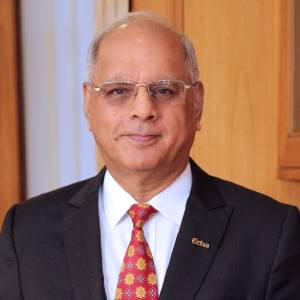
Suresh Vazirani
Founder Chairman,
Erba-Transasia International group of companies
Mr. Suresh Vazirani seeks Govt. help to make India not only Atmanirbhar but also the largest manufacturer of Medical Devices in the world.
The Indian Medical devices sector is expected to grow by 14-15% from FY23-26E, buoyed by a higher investment in health care by Central Govt as well as the state governments and the private sector. Medical Devices play a critical role in healthcare, including wellness testing, disease prevention and detection and disease cure.
However it is a matter of grave concern that while India has landed on the moon, India has been since last 75 years, continuing to import more that 75% of its requirements of Medical Devices and is 100% dependent on overseas manufacturers for its needs of most of the high tech Medical devices.
This is neither good for our people who can ill afford high cost imported Medical Devices nor is it good for our Rashtra Sanman. It is high time our Honorable Prime Minister launches a great “Atma Nirbhar Bharat Missio” for reducing import dependence to 50% in next 10 years.
Indian Medical Device manufacturers are confident of boosting Make in India if the Government of India supports the industry with following policies for next 10 years:
- GST : While maintaining the current total GST rate of 18% on imports, the general rate of GST on all Make in India medical devices should be reduced to 5%. This would make it a level playing field for Indian manufacturers who suffer several higher costs as compared to overseas manufacturers.
- PLI scheme: A PLI incentive of 7% should be extended to each and every medical device produced in India over next 10 years.
- Tax Incentives for R&D: India can not become a successful manufacturer of medical devices if it does not develop the advanced technologies for Medical devices. Encouraging research and development through weighted tax deductions of 200% would spur innovation within the medical device sector.
4) Inverted Duty structure: it is unfortunate that inspite of industry’s crying hoarse over this unjustified penalty for Indian manufacturers, this colonial era injustice has not been corrected.
By implementing the above mentioned doable measures, the Government of India can be successful in :
1) revolutionising the medical devices production and making Atma Nirbhar Bharat in just 10 years in the crucial sector of medical devices.
2) create over 1 crore jobs for engineers , doctors and technicians
3) reducing the cost of medical treatment not only in India but also in over 150 developing countries of the world benefitting over 5 Billion people.
4) create a totally new and large Medical Tourism sector for treating patients not only from developing countries but also from developed countries in Europe and America who just do not have adequate trained manpower for health care. Medical Tourism has the potential to add over 1% to India’s GDP in 10 years.
5) fulfilling its commitment to a more affordable and robust healthcare system for all Indians.
………………………………………………………………………………………………………………………………………………

Mr Himanshu Baid, Manging Director, Poly Medicure Ltd
Elevating Expectations for Healthcare and Medical Devices in the Union Budget 2024
As anticipation builds for the Union Budget 2024, the healthcare and medical device sectors in India are poised with optimism and expectation. These sectors have proven pivotal, highlighting the critical need for robust support and strategic investments.
Innovation stands at the forefront of our expectations. The medical device industry thrives on innovation, driving advancements that improve patient care and operational efficiencies. We look to the government to introduce policies that foster a culture of innovation, including fresh incentives for research and development, and support for startups and innovators.
Skill development is another crucial area requiring attention. Investing in training programs tailored to the medical device industry will ensure a skilled workforce capable of meeting the sector’s evolving demands.
GST rationalization is a long-standing expectation of the medical device sector. Simplifying the GST structure to a uniform 12% across all categories will not only enhance affordability in healthcare but also strengthen domestic manufacturing.
Consolidating regulatory approvals into a unified platform will also help to accelerate the introduction of innovative medical devices to market.
Preventive healthcare deserves heightened focus in the upcoming budget. Initiatives that promote preventive care through incentives for diagnostic devices, health screenings, and wellness programs will contribute to a healthier population and reduce the burden on the healthcare system in the long run.
Furthermore, enhancing healthcare infrastructure and digital health initiatives are critical components of a comprehensive healthcare strategy. Investments in telemedicine, electronic health records, and digital platforms will improve healthcare access and efficiency, particularly in remote and underserved areas.
As we await the budget announcement, we are optimistic that the government will prioritize these key areas to propel the healthcare and medical device sectors forward. By fostering innovation, investing in skill development, rationalizing GST, and promoting preventive care, India can pave the way for a healthier and more resilient future.
…………………………………………………………………………………………………………………………………………….

Rajiv Nath
Mg.Director@ HMD | Forum Coordinator@ AIMED
AiMeD seeks hike in custom duty on medical devices to a nominal 15% up from current 7.5% in Union Budget-24
Flags the issue of 70% import dependent medical device sector
Trade margin capping by monitoring MRP of imports
Income Tax benefits for CAPEX and R&D investments in medical devices sector
New Delhi, July 9, 2024: The Association of Indian Medical Device Industry (AiMeD) has submitted a Pre-Budget memorandum, urging Finance Minister Nirmala Sitharaman a strategic hike in customs duty on medical devices to a nominal 10-15%.
“This will foster a more balanced trade environment, encouraging domestic manufacturing and reducing reliance on imports, which currently still constitutes a staggering 70% of the sector,” said Rajiv Nath, Forum Coordinator, AiMeD.
“The imports of medical devices are consistently over Rs 61,000 crore for the last three years and regretfully this year have increased by 13 per cent to Rs 69,000 crore,” stated Nath in the Pre-Budget memorandum, also marked to Union Health and Family Welfare Minister JP Nadda, Secretary Apurva Chandra; and Arunish Chawla, Secretary, Department of Pharmacy.
A significant concern flagged by AiMeD in the memorandum is the prevailing inverted duty structure. To address this, AiMeD has proposed the implementation of a 5% health cess on custom duty for the remaining medical devices as this was earlier applied to a limited medical devices and this health cess was used to fund resources for Ayushman Bharat . This correction is expected to harmonise the duty structure, making it more conducive for local manufacturers to thrive and be competitive globally and locally, added Mr Nath.
Another pivotal aspect highlighted by AiMeD is the necessity for trade margin capping. “By monitoring the Maximum Retail Price (MRP) of imports, the Government will curb the excessive mark-ups often seen in the market. This measure will make medical devices more affordable and accessible to the Indian populace, ultimately benefiting public health as consumers are affected not by import duty protection as much as by artificially inflated MRP of medical devices
Referring to one of the core focusses of National Medical Devices Policy-2023 to reduce import dependence by 70 per cent and make India a global manufacturing hub of medical devices , Mr Nath said that the Union Budget for FY 2024-25 must also announce income tax benefits specifically tailored for capital expenditure (CAPEX) and research and development (R&D) investments within the medical devices sector.
“Such fiscal incentives are crucial for fostering innovation, enhancing production capabilities, and propelling India towards self-reliance in medical technology ,” he said, adding that AiMeD suggestions are not just about immediate economic adjustments but are a strategic blueprint aimed at revitalising India’s medical device industry.
……………………………………………………………………………………………………………………………………………..

Gaurav Agarwal MD Innvolution Healthcare
- Rescheduling of PMP for X-ray Tube & Flat Panel Detector as per Industry recommendations in consensus with Department of Pharmaceuticals, Ministry of Chemicals & Fertilizers, Government of India as below; (DoP Recommendation letter is attached herewith)
- 1st June 2024 to 31st March 2025- 5%
- 1st April 2025 to 31st March 2026- 7.5%
- 1st April 2026 to 31st March 2027- 10%
- Trade Margin Capping by monitoring MRP at Import landed price
- Income Tax benefit for CAPEX and R&D investments in medical devices
- Incentivizing Manufacturers:
- Design Awards and Tax Benefits: Industrial design is crucial for the ease of acceptance and usability of medical electronics. Recognizing and rewarding excellence in design, as seen with prestigious awards like the Red Dot, Good Design, and India Design, can significantly enhance product acceptance and market success. Establish a design award offering a 2-3% rebate in tax / customs duty or other type of tax benefits. Award additional points or benefits in public procurement to incentivize innovative design. These awards set benchmarks for quality and innovation, encouraging manufacturers to prioritize design excellence.
- Indigenization Incentives: To bolster the domestic manufacturing of medical electronics under the Make in India initiative, it is essential to provide substantial incentives for companies achieving indigenization percentages above 26%. These incentives should include tax benefits such as rebates or reductions in corporate tax rates, and exemptions on customs duties for imported raw materials and components. Additionally, subsidies and grants should be offered to support local manufacturing infrastructure and workforce training. Public procurement
-
- preferences should award additional points to companies meeting indigenization thresholds, ensuring government support for domestic products. Enhanced R&D incentives and access to state-of-the-art facilities at subsidized rates will further encourage local innovation. Recognizing companies through awards for significant indigenization efforts will promote best practices and highlight success stories. A robust assessment and certification process, in collaboration with industry bodies, will ensure transparency, while a comprehensive monitoring and evaluation framework will track progress and inform policy adjustments. These measures can significantly enhance the competitiveness and self-reliance of India’s medical electronics industry.
- Export Incentives: Offer substantial incentives for exports, as the current export levels in medical electronics are minimal. Develop better incentive programs beyond the current Remission of Duties and Taxes on Export Products (RoDTEP) scheme.
- Expand PMP Scope: Expand the scope of the PMP to cover more components and sub-assemblies, ensuring a gradual increase in domestic manufacturing capabilities. Monitor and adjust the PMP based on industry feedback and technological advancements to remain relevant and effective.
- Reduction in GST Rates
- Current Issue: The GST rate on medical devices ranges between 12% and 18%, which significantly increases the cost for end-users.
- Recommendation: Reduce GST on all medical devices to a uniform rate of 5% to make healthcare more affordable and accessible.
- Reversal of Inverted Duty Structure on Devices like Stents
- Current Issue: The inverted duty structure, where import duty on finished products like stents is lower than on raw materials, increases costs for domestic manufacturers.
Recommendation: Reverse the inverted duty structure on critical medical devices such as stents to encourage domestic manufacturing and reduce reliance on imports.
………………………………………………………………………………………………………………………………………………

Mr. Abhay Soi, President, NATHEALTH and Chairman & Managing Director, Max Healthcare Institute Limited,
Achieving Viksit Bharat 2047: NATHEALTH calls for major reforms to catalyze healthcare infrastructure expansion, separate Medical Device policy, Services & Diagnostics footprint expansion and according national priority status in Union Budget 2024-25
The recommendations encompass both short-term and long-term strategies aimed at enhancing access to healthcare services and improving quality throughout the supply chain and positioning India as a Global Hub in Healthcare full stack solutions.
NATHEALTH-Healthcare Federation of India for the Union Budget 2024-25 has submitted a visionary blueprint designed to transform the country’s healthcare system in line with the Health for All agenda and the goal of achieving a Viksit Bharat by 2047. In its recommendations, NATHEALTH has called on the government to implement transformative measures that focus on strengthening healthcare infrastructure and making strategic investments to address both demand and supply-side challenges, while raising the public health expenditure to above 2.5 percent GDP.
NATHEALTH in its submission emphasized on increasing PMJAY/CGHS acceptability of the scheme among frontline quality providers in private sector, unlocking private capital to achieve Universal Health Coverage (UHC), easing compliance under ease of doing business using digital tools, and promoting the Medtech & supply value chain eco system to innovation and localization. With India becoming a preferred choice globally, policies to promote India as a preferred destination full stack of medical product, services & solution is the need of the hour. NATHEALTH further advocated for rationalizing GST with a uniform 5% rate slab for healthcare and full input tax credit eligibility, addressing the issue of unused MAT credits, and reviewing health cess policies for MedTech to ensure affordability. Additionally, NATHEALTH recommended declaring healthcare a National Priority status to facilitate better financing and offering tax incentives to encourage private sector investment in healthcare infrastructure, manufacturing, digital health, exports and education across India at par with SEZ policies available across other sunshine sectors.
Mr. Abhay Soi, President, NATHEALTH and Chairman & Managing Director, Max Healthcare Institute Limited, said, “India has made significant strides toward becoming a global healthcare powerhouse and this has substantially contributed to GDP and job creation. As the nation progresses toward achieving a USD 5 trillion economy, providing quality healthcare for the entire population is a pre-requisite. Addressing healthcare challenges will require an estimated 2 billion square feet of advanced healthcare infrastructure. To meet these needs, increasing GDP spending on healthcare to 2.5% is crucial for enhancing social insurance, expanding facilities in tier 2 and 3 cities, and advancing digital health services.
The upcoming budget must focus on healthcare infrastructure, innovation, skill development for medical professionals, and strengthening public-private partnerships to ensure improved access and quality across the nation. Prioritizing research and development will drive medical innovation and address emerging health challenges.”
………………………………………………………………………………………………………………………………………………

Dr. Rajiv Rao
Dean
DY Patil Medical College,
Navi Mumbai.
My expectations from this budget.
1. Increased budgetary allocation for healthcare.
2. Increased number of healthcare services covered under Ayushman Bharat
3. Alignment of Central government and state government health schemes, probably with some amount of cross subsidy.
4. Wider coverage and availability of government healthcare schemes even in non governmental hospitals.
5. Financial Incentives for manufacturing of high end healthcare equipment to decrease overall cost of treatment.
6. Spend to improve quality in all aspects of healthcare delivery system.
7. Make all medical colleges that are more than 10 years old as partners in delivery of various healthcare schemes and incentivize if necessary.
8. Focus on Non communicable and other chronic diseases.
………………………………………………………………………………………………………………………………………………

Nitin Gupta
Managing Director India & South Asia
Fujifilm Sonosite India Pvt ltd
In alignment with the government’s development goal and to attain the developed nation status, it is pertinent to note that the healthcare sector has stand out as crucial aspect towards realization of nation’s aim for inclusive growth, and sustainable development. The emphasis on technology and innovation has marked a commitment to securing India’s position at the forefront of the fourth industrial revolution. A significant boost was provided to this sector with the expansion of Ayushman Bharat, a flagship insurance scheme & establishment of more medical and nursing colleges thereby providing more healthcare professionals. The government seeks to foster an ecosystem ripe for discovery and entrepreneurial ventures by allocating funds to support start-ups and new-age technological advancements. These measures are poised to transform India into a global hub for technological advancements and skilled manpower.
While numerous reforms were introduced for healthcare sector, the industry stakeholders have high expectations that the financing schemes will be further strengthened and extended to meet healthcare needs of the nation, especially public health spending which is projected to increase by 2.5% of GDP by 2025. With the increased ambit of Medical colleges and hospitals, reforms in the establishment of standard protocols in clinical practise is the need of the hour to make “Affordability of Quality Healthcare for All” a reality. In order to strengthen the Ayushman Bharat, a scientific costing study for various treatments is necessary to determine sustainable reimbursement rates, thereby encouraging private healthcare providers to participate and help expand the scheme to senior citizens.
For ease of doing business, not only there is a need for Single Window Clearance System but also standardized protocol towards its successful implementation is the dire need of the hour. Currently 55+ licenses required via multiple portals in different states asking for similar data requirements along with multiple applications and payment processes. Implementation of Clinical Establishment Act and PC&PNDT Act shall be uniform for all states. The government should consider expanding the PPO for inclusion of Research and Innovation to encourage and sustain innovation ecosystem in India. It’s time to address the distorted duty structure on import of medical devices which varies from 12%-18%, especially as we look at the affordable and quality healthcare system in India. The industry advocates incentives for multinational corporations, small, micro, medium enterprises involved in research and indigenous production, streamlining regulatory processes for faster product approvals. Tax incentives for investment in advanced technology, domestic manufacturing.
………………………………………………………………………………………………………………………………………………
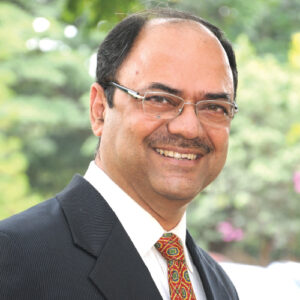
Sunil Khurana
CEO & MD at BPL Medical Technologies Pvt. Ltd
As we look forward to the upcoming budget season, I aim at steering not just BPL MedTech, but the entire medical technology sector towards growth, resilience, and self-reliance. The below views encapsulate the aspirations of not only BPL Medical Technologies but also the MedTech industry in India.
- A renewed commitment to the “Make-in-India” initiative. The GOI must prioritize policies that empower domestic manufacturing, positioning India as a global leader in producing high-quality medical devices.
- To ensure the success of made-in-India products, implementation of better policies, streamlining regulations and incentivizing the adoption of locally manufactured medical devices within the Indian market needs to be encouraged.
- An increase in customs duties to a min of 20% level to establish a higher entry barrier
For products being imported from common land border sharing countries that are presently circulating in the market. This will help safeguard our domestic market and promote the utilization of high-quality, locally-produced medical devices.
- Creating an easier route for exports and simplifying procedures will facilitate the global reach of Indian medical devices, contributing to a more robust industry.
- The Production-Linked Incentive (PLI) scheme proposed by the GOI needs redefinition, to ensure that MSMEs and Medium-scale Indian companies can readily qualify for its benefits. For any country to become self-sustaining, small/medium companies become the backbone & government must help build this.
- Recognizing the challenges posed by understaffing in regulatory bodies like BIS, CDSCO etc., a significant increase in team size and resources is appreciated, to expedite approval processes, particularly benefiting smaller companies, with a firm commitment to ensuring a turnaround time of no more than 30 days.
- To have a local presence, it starts with building its own technology through R&D. A more participative approach to incentivize R&D, suggests the subsidization of intangible expenses of technology transfer. Coupled with a 50% subsidy, this initiative will accelerate the localization of medical devices.
- To compete with other major developing countries approach to grow their exports in India, we need to re-look at our Exports promotion by increasing export incentives ~10% level.
- As in previous budget, respected FM had commented that 2.5% of GDP will be spent for Healthcare Sector. We must aim to quickly achieve the 2.5% & try to gradually grow towards 5%.
These pre-budget expectations will not only enhance the competitiveness of Indian products but also contribute significantly to the growth and sustainability of the Indian MedTech sector. It is my hope that these proposals resonate with the government’s vision for a healthier, more self-reliant India.
……………………………………………………………………………………………………………………………………………..

Ms.Chandra Ganjoo
Group CEO,Trivitron Healthcare
The upcoming Indian budget is expected to focus on 360-degree innovation across all sectors. People are looking forward to measures that will boost economy, create jobs, enhance infrastructure, and advance technology. There is also a strong anticipation for the budget to address healthcare, education, and sustainable development comprehensively.
For the MedTech industry, this budget is a fundamental moment. As stakeholders in this dynamic sector, we eagerly await a budget that is MedTech-focused, emphasizing ‘Make in India’ initiatives and bolstering research and development. Increased funding for R&D will drive innovation, enabling us to deliver best-in-class solutions and maintain our competitive edge globally. A potent budget will empower the industry to meet rising healthcare demands, improve patient outcomes, and reinforce India’s position as a leader in medical technology.
Adding to this, the medical device industry anticipates significant policy changes in the upcoming budget, focusing on tax incentives, reduced import duties, and increased funding for R&D. Stakeholders hope for streamlined regulatory processes and support for domestic manufacturing to enhance innovation and global competitiveness.
………………………………………………………………………………………………………………………………………………

Deepak Pahwa, Director, Delair
“The pharmaceutical industry is optimistic about the upcoming budget, especially following the government’s implementation of enhanced quality control measures like Good Manufacturing Practices and revised Schedule M. With the Indian pharma sector making significant strides globally, increased budget allocation can bolster our international standing. We anticipate initiatives incentivising R&D to support the local manufacturing of high-quality pharma products. Additionally, PLI schemes could greatly assist in establishing advanced manufacturing facilities and integrating cutting-edge technologies and machinery. These steps are vital for promoting innovation and sustainable growth within the industry”.
………………………………………………………………………………………………………………………………………………
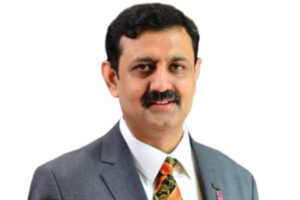
Chander Shekhar Sibal
Sr. Vice President at Fujifilm India Pvt. Ltd.
- Increase in Make in India products with revised PLI Scheme.
- Govt. Support in R&D
- Increase in Digitisation with Universal Health Interface , Health Insurance and NABL to be given to Digital Hospitals who are connected with HIS/RIS/PACS
- Coverage of Middle-Income Group who are paying Income Tax under Aayushmaan Bharat with Copay Insurance of 10,000 Rupees / Year/Person of Family .
New Teaching Hospitals , Nursing Institutes , Technician Trainings for Skill Development in Healthcare arena.
………………………………………………………………………………………………………………………………………………

Jatin Mahajan
Secretary, Association of Diagnostic Manufacturers of India (ADMI)
Indian MedTech is making significant strides and majorly driving the Indian Government’s Healthcare for All initiative. The interim budget 2024 was a damp squib and had nothing of impact for the MedTech sector.
We have tremendous hope and expectations from the Union Budget 2024 to be presented on 23rd July. Indian medical devices companies are steadfast in their efforts to place India strongly on the global MedTech map, and various policies and support decisions are required from the Government to ensure this growth.
- The two schemes launch in September 2023 – National Policy on Research and Development and Innovation in the Pharma-MedTech Sector in India and Scheme for promotion of Research and Innovation in the Pharma MedTech Sector (PRIP) could have far-reaching impact and we would like to see progress and concrete government action & budgeting to make this a reality.
- The Export Promotion Council for Medical Devices (EPC-MD) must be strengthened to address the MedTech industry’s export issues adequately. This body must be empowered and fast-paced to provide the much-needed fillip for the industry’s international growth.
- The task force constituted by the Commerce Ministry to address exporters’ woes must also examine the woes of the MedTech exporters and address their trade and technical barriers. A clear-cut path needs to be chalked out.
- Allowance of refurbished medical devices disregard the National Medical Device Policy 2023 which seeks to make our country Atma Nirbhar (self-sufficient) in medical devices and also a global leader. This decision must be reconsidered and scrapped, except in the rarest of rare cases where Indian solutions may not be available for the next few years.
- There is a need to bring in rationalisation and ensure that Indian standards like ICMED enjoy the same respect, credibility, and acceptance as international standards like ISO, FDA, CE, MDR and AIMD. Quality and standardisation have always been a critical issue, and without an at-par status, Indian exporters will continue to grapple with the bottleneck of seeking individual certifications for each product in every country they want to export to.
- Even though the government has a policy for purchase preference for Made in India products, unfortunately, this policy has not worked. The Government’s procurement policy seems to favour imported devices, and the current trend highlights that there are more imports than procurements from domestic players. In most government purchases, there is no preference for ‘Made in India’, especially as the state governments are not implementing this policy effectively.
- Skilled human resources are critical areas that need compelling government attention. This should be taken up on priority under the skill development initiative. The Government must work with the industry to identify the specific need-gap for timely addressal of the issue.
- With the massive influence that AI – ML – IoT, and telemedicine have on the medical devices segment, there is an urgent need to put safeguards and guidelines in place. AI adoption, implementation and data privacy issues require a comprehensive AI and cyber security policy to be drafted and implemented.
- Inverted duty structure remains a long-standing woe of the medical devices segment, and the Government’s stoic inaction on this front is surprising and dismaying.
We have regularly drawn the government’s focus to numerous other issues, concerns, and attention areas – insufficient raw material & supplies, access to clinical trials, and the ineffectiveness of the PLI scheme since it does not cater to the relatively less significant players. For India to shine on the global MedTech map, the Government must address these concern areas on a war footing.
India is the global Centre for frugal medical device engineering. However, most hi-tech innovative products and technology originate from a well-developed ecosystem, and the US + Europe + Japan accounts for about 85 per cent of the roughly $220 billion revenues. There is an urgent need for G2G and P2G interactions and interfaces to transfer relevant technologies to India (as is happening in defence productions).
The MedTech industry in India is currently at a turning point with high-growth opportunities. Key factors such as market size, cost-effective manufacturing, a skilled workforce, and a thriving startup ecosystem will lay the foundation for expanding the industry.
The Government should promote an innovation culture in India to promote indigenous industry and reduce our dependence on imports. By 2025, the Indian MedTech market may reach USD 50 billion with a growth rate (CAGR) of 22%.
………………………………………………………………………………………………………………………………………………

Dr. Wasim Ghori – UK Alumni, IIM – Ahmedabad
To,
The Honorable Union Finance Minister of India
For the upcoming Union Budget 2024-25, I urge you to focus on two key areas: prioritizing preventive healthcare and building a robust ecosystem to boost Medical Value Travel (Medical Tourism).
India faces a significant challenge with the rising burden of Non-Communicable Diseases (NCDs) which contribute to over 60% of the total mortality rate. This trend is particularly severe in urban areas due to factors like sedentary lifestyles, unhealthy diets and tobacco use. It is crucial to allocate increased funding to public health programs, screening initiatives and NCD prevention aligned with the National Health Mission. Emphasizing preventive healthcare, awareness, education and NCD screening at the primary care level can significantly reduce the long-term burden on our healthcare system.
Moreover, Medical Value Travel (MVT) is a growing global trend, with over 70 million medical travelers seeking treatment outside their countries. India is a preferred destination for many, especially from Africa, the Middle East and Central Asia. To maintain our leadership in this sector, it is essential to prioritize value over commerce and ensure transparency in treatments and promotions. Establishing guidelines for advertising will help patients make informed decisions and avoid false claims.
Let Budget 2024 be a testament to our commitment to the health and well-being of every citizen, regardless of their geographic location.
………………………………………………………………………………………………………………………………………………

Dr. P N Arora, Chairman of Yashoda Super Speciality Hospitals Kaushambi says “A critical aspect of the healthcare demands revolves around accessibility and affordability. The sector advocates for subsidies or free health check-ups, especially for women and children, aiming to improve preventive care and early detection of diseases. In addition, there is a push for incentives and support for domestic manufacturing of medical devices to reduce reliance on imports and align with the ‘Make in India’ campaign. Non-communicable diseases (NCDs) like diabetes, cardiovascular diseases, and cancer are a major health concern in India. There is a need for increased budget allocation to prevent, treat, and manage NCDs, including supporting research, public awareness campaigns, and making treatment options more accessible. The sector also emphasizes the importance of training and re-skilling healthcare workers to meet evolving healthcare demands with new technologies. Regarding health insurance, stakeholders are seeking fiscal reforms to create a more inclusive and sustainable health coverage model. It involves revisiting GST tariffs on healthcare services and products to ensure affordability and accessibility across all socioeconomic segments. Additionally, there is a call for insurance coverage for preventive healthcare measures, not just reactive medical treatments.”
……………………………………………………………………………………………………………………………………………..

Dr. Rajesh Patel, CEO AGD Biomedicals Pvt. Ltd.
Budget Expectations by the Healthcare, HealthTech, and Elder Care Sectors from the Union Budget 2024 The healthcare, health tech, and elder care sectors are eagerly anticipating the Union Budget 2024, with high hopes for significant allocations and reforms that can address current challenges and foster growth. Here are some key expectations from these sectors: 1. Increased Healthcare Funding The primary expectation from the Union Budget 2024 is a substantial increase in healthcare funding. The COVID-19 pandemic underscored the need for a robust healthcare infrastructure. Increased budget allocation can be utilized for: • Expanding public healthcare facilities, especially in rural and underserved areas. • Upgrading existing healthcare infrastructure with modern equipment and technologies. • Strengthening the capabilities of primary health centres and community health centres. • Enhancing the quality and accessibility of healthcare services. 2. Boost for HealthTech Innovation The health tech sector, which encompasses telemedicine, digital health records, AI-driven diagnostics, and other innovations, seeks support for: • Research and Development (R&D): Increased funding for R&D to drive innovation in medical technologies and healthtech solutions. • Start-up Incentives: Tax incentives and grants for health tech start-ups to encourage entrepreneurship and technological advancements in healthcare. • Digital Infrastructure: Investment in digital infrastructure to support telemedicine and remote healthcare services, ensuring widespread adoption and access. • Appreciation of Indian Innovation: Recognizing and appreciating the innovation efforts by Indian companies in the health tech sector. Indian R&D and manufacturers should be incentivized through financial subsidies to set up facilities, and they should be provided with easy loans to encourage domestic production and innovation. 3. Tax Reforms and Incentives The sectors are looking forward to tax reforms that can alleviate financial burdens and promote growth: • GST Reduction: Reduction in Goods and Services Tax (GST) on medical equipment and health tech products to make them more affordable. • Tax Breaks: Tax breaks for companies investing in health tech R&D and those providing healthcare services, particularly in rural areas. • Customs Duty Relief: Reduction or exemption of customs duties on imported medical devices and health tech components to lower costs and enhance accessibility. 4. Public-Private Partnerships (PPPs) Encouragement of Public-Private Partnerships (PPPs) to leverage private sector efficiency and innovation in public healthcare projects: • Collaborative Projects: Incentives for collaborative projects that improve healthcare infrastructure and services. • Shared Resources: Frameworks for shared resources and expertise between public and private entities to address healthcare challenges comprehensively. 5. Skilling and Workforce Development Investment in skilling programs to address the shortage of trained healthcare professionals: • Training Programs: Government-funded training programs for doctors, nurses, and allied health professionals to enhance their skills and competencies. • HealthTech Training: Specialized training programs for health tech professionals to ensure the effective implementation and usage of new technologies. 6. Focus on Preventive Healthcare Promoting preventive healthcare measures to reduce the disease burden and healthcare costs: • Awareness Campaigns: Government-funded awareness campaigns on preventive healthcare practices and lifestyle modifications. • Screening Programs: Nationwide screening programs for early detection of chronic diseases and timely intervention. 7. Universal Health Coverage Steps towards achieving universal health coverage, ensuring that every citizen has access to essential healthcare services: • Ayushman Bharat Expansion: Expansion of the Ayushman Bharat scheme to cover more beneficiaries and include additional health services. • Affordable Insurance: Initiatives to make health insurance more affordable and accessible to all segments of society. 8. Regulatory Reforms Streamlining regulatory processes to facilitate the swift approval and adoption of new medical technologies and treatments: • Simplified Approval Processes: Simplified and faster approval processes for new drugs, medical devices, and healthtech innovations. • Quality Standards: Ensuring high standards for medical products and services to maintain safety and efficacy. 9. Elder Care Initiatives Given the rapidly ageing population in India, elder care is becoming increasingly important. The budget should address the specific needs of this demographic: • Dedicated Healthcare Services: Allocation for specialized healthcare services catering to the elderly, including geriatric care units and specialized training for healthcare providers. • Subsidies and Incentives: Subsidies for elder care facilities and incentives for businesses providing products and services tailored to the elderly. • Home Healthcare Support: Funding for home healthcare services to support ageing in place, including home visits by healthcare professionals and telehealth options. • Pension and Financial Support: Enhanced pension schemes and financial support for the elderly to ensure they have the resources to afford quality healthcare. • Awareness and Training: Programs to raise awareness about elder care needs and training for caregivers to improve the quality of care provided at home. 10. Healthcare at Home The concept of healthcare at home has gained significant importance, especially in the postpandemic era. The budget should support the following: • Home-Based Care Services: Funding and incentives for companies providing homebased healthcare services, including nursing care, physiotherapy, and chronic disease management. • Telehealth Expansion: Investment in telehealth technologies to facilitate remote consultations, monitoring, and follow-ups, reducing the need for hospital visits. • Support for Caregivers: Financial support and training programs for family members and professional caregivers who provide in-home care. • Home Medical Equipment: Subsidies and tax breaks on home medical equipment such as oxygen concentrators, portable dialysis machines, and other essential devices.
………………………………………………………………………………………………………………………………………………

Dr. Mandeep Singh Basu, Director- Jagat Pharma & Dr. Basu Eye Hospital.
With the constant evolution in the modern healthcare sector, the Indian pharmaceutical industry aims to grow not only in its export markets but also to become self-reliant in the long run. Creating an ecosystem and policies that support the industry is essential.
The current scenario demands an AI-integrated healthcare system to enhance diagnostic accuracy and patient care. An affordable approach to make Ayurveda accessible to common people is also crucial. Increased funding allocation for R&D and infrastructure development would improve overall medical outcomes and can enhance quality standards and achieve self-reliance, helping integrate more Ayurveda Acharyas into the healthcare system and establish more Ayurvedic colleges across the country, similar to AIIMS centers, which have initiated many Ayurveda Institutes of Teaching & Research. Allocating funds towards research and development enables comprehensive case studies, clinical trials, and new drug developments, enriching the Ayurvedic knowledge base and advancing science. Expanding medical services in tier-1 and tier-2 cities is essential to bridge the gap between urban and semi-urban areas.
Expectations from the Ayurvedic industry budget also includes Tax breaks, subsidies, and financial incentives for Ayurvedic product manufacturers to promote the industry’s growth. Allocating funds for standardization and quality control of Ayurvedic products will enhance their credibility and global acceptance. Financial support for the promotion and marketing of Ayurvedic products both domestically and internationally is vital, along with policies and funding to facilitate the integration of Ayurveda with mainstream healthcare systems for a holistic health approach. Measures to support the export of Ayurvedic products, such as easing regulatory requirements and providing marketing assistance in foreign markets, are also important. Funding for public awareness campaigns to educate people about Ayurveda’s benefits and encourage its use for preventive and curative healthcare is necessary.
We see the 2024 budget as an opportunity to create a healthy and sustainable ecosystem, contributing to individual health and the nation’s growth while preserving the ancient spirit of therapeutic tradition.
………………………………………………………………………………………………………………………………………………

Dr. Ravi Rathod
General Manager- Policy & Strategic Affairs
- To Reschedule the duty on X-ray Tube & Flat Panel Detector:
Problem Statement: X-ray tubes and flat panel detectors are indispensable components of medical imaging systems, playing a crucial role in accurate diagnosis and treatment planning. There are only two companies in the world which manufacture these components and there is none in India. The significant cost escalation due to increased custom duty may result in higher prices for these equipment, ultimately burdening healthcare facilities and leading to increased medical expenses for patients. This situation directly contradicts the government’s vision of providing affordable healthcare services to all citizens.
Recommendation: In consensus with Department of Pharmaceuticals, Ministry of Chemicals & Fertilizers, Government of India’s recommendation & industry recommends the duty structure for these two components as below; (DoP Recommendation letter is attached herewith)
- 1st June 2024 to 31st March 2025- 5%
- 1st April 2025 to 31st March 2026- 7.5%
- 1st April 2026 to 31st March 2027- 10%
- Continuation of Monitoring the Pricing of Medical Devices: Monitoring the pricing of medical devices should continue under Paragraph 20 of the DPCO 2013. This ensures that the prices of medical devices notified as drugs do not increase by more than 10% per year, thereby maintaining affordability while allowing for necessary price adjustments due to inflation and other economic factors.Trade Margin Capping by monitoring MRP at Import landed price.
In addition to this we recommend Customs to monitor MRP of imports and when found unreasonably higher than imports landed price.
- Inverted Duty Structure reversal on Critical Medical Devices like Stents
Problem Statement: The inverted duty structure, where the import duty on finished products like stents is lower than the duty on raw materials, results in higher costs for domestic manufacturers.
Recommendation: To promote domestic manufacturing and reduce reliance on imports, it is essential to reverse the inverted duty structure on critical medical devices such as stents.
- The Indian medical devices industry has the potential to expand from $12 billion to $50 billion by 2030, significantly reducing import reliance by 35% and boosting exports from $3.4 billion to $18 billion. This growth could generate over 1.5 million jobs in medical device manufacturing and related healthcare services. To support this expansion, the Union Budget 2024-25 should broaden the scope of the Production Linked Incentive (PLI) scheme and include potential industries to achieve $1 trillion in exports by 2025. Establishing a solid foundation and streamlining the approval process will create a robust framework that attracts foreign investments and encourages local ‘Make in India’ companies to thrive.
- Prohibition on Refurbished Medical Devices: The Government’s decision last year to permit refurbished medical devices contradicts the National Medical Device Policy 2023. This move could lead to large-scale dumping of outdated technology and electronic waste from other countries, undermining the Atma Nirbhar Bharat and Make in India initiatives. It also poses a significant challenge to Indian companies striving to develop affordable, high-tech, innovative solutions. Therefore, the import of refurbished medical devices should only be allowed in exceptional and critical cases where Indian alternatives are not expected to be available in the near future. For all other cases, this practice should be completely prohibited.
Digital Infrastructure Investment: Investing in robust digital infrastructure is essential for the MedTech industry to support the integration of advanced technologies like AI, IoT, and telemedicine. The global telemedicine market, projected to reach $185.6 billion by 2026, and the AI in healthcare market in India, expected to grow at a CAGR of 50.2% from 2021 to 2027, highlight the immense potential of digital health solutions. Moreover, the IoT in healthcare market is expected to reach $534.3 billion by 2025, with significant contributions from India, necessitating reliable and secure digital infrastructure. Cybersecurity is also crucial, as the global market in healthcare is projected to reach $125 billion by 2025, ensuring the protection of sensitive patient data. Government initiatives like the National Digital Health Mission (NDHM) aim to create a comprehensive digital health ecosystem, requiring substantial budget allocations. Additionally, with healthcare data expected to grow at a CAGR of 36% through 2025, robust infrastructure for data management is imperative. The digital health market in India, forecasted to reach $485 billion by 2024, further emphasizes the need for investment in digital infrastructure to make healthcare more accessible and efficient. By prioritizing these investments, the Union Budget 2024-25 can drive innovation, improve healthcare delivery, and enhance the overall health and well-being of the population.
………………………………………………………………………………………………………………………………………………

Neha Lal
General Manager – Adani Healthcare
Speaking on expectations on upcoming budget, The National Digital Health Mission (NDHM) is likely to receive significant attention, which may include Key aspects such as Funding for the development and implementation of a unified health ID system for all citizens, Allocation for building a robust, secure digital health records system, Investment in telemedicine infrastructure to improve healthcare access in remote areas.
To encourage private investment in healthcare, especially in underserved areas, Tax holidays for setting up hospitals in tier-2 and tier-3 cities. Reduced import duties on advanced medical equipment to make it more affordable for private hospitals and promote Make-in-India equipments. Special economic zones (SEZs) for medical device manufacturing with tax benefits will boost this industry. Public-Private Partnership (PPP) models with risk-sharing mechanisms to attract private players to rural healthcare.Easier and higher limits on external commercial borrowings for the healthcare sector. GST exemptions or reductions on certain healthcare services and equipments too would benefit.
Increased allocation for national immunization programs, including the introduction of new vaccines. Funds for scaling up screening programs for non-communicable diseases like diabetes, hypertension, and cancer. – Budget for health education and awareness campaigns, particularly focusing on lifestyle diseases.
…………………………………………………………………………………………………………………………………………….

Dinesh Lodha, CEO – TI Medical
I want to emphasize certain important goals for the MedTech industries as we get ready for the next union budget. First and foremost, innovation in the dynamic healthcare industry depends on a supportive economic climate for research and development activities. We expect financial arrangements that will encourage investments in state-of-the-art technologies, ensuring our position as industry leaders. Moreover, faster product launches and market entry will result from less complicated regulatory procedures and enabling laws. Our team’s skills would improve and our dedication to excellence would be aligned with an emphasis on skill development and worker training incentives. Finally, reducing customs taxes on medical devices imports would help to bring healthcare expenses down. Reduced import duties also mean reduced expenses, giving patients access to modern technology and encouraging companies to bring the latest products to the Indian market.
A budget that meets these objectives will, we are sure, not only support the growth of our MedTech industry but also enhance healthcare.
………………………………………………………………………………………………………………………………………………

Dr. Sanjeev Singh
Medical Director
Amrita Hospital, Faridabad
As the nation eagerly anticipates the upcoming budget, the health sector remains a focal point of discussion. The health sector is not just a critical component of public welfare but also a significant contributor to the nation’s GDP. Currently, the healthcare sector contributes approximately 1.7% to the GDP.
With strategic investments and reforms, this contribution can be significantly increased. The budget should aim to elevate the healthcare sector’s GDP contribution to around 5% over the next few years.
Investment in Healthcare Infrastructure
An increased budget allocation is crucial for building and upgrading hospitals, clinics, and diagnostic centers. This investment will not only improve access to healthcare services but also enhance the overall quality of care provided to patients.
Digital Health Mission
Efforts are underway to implement a digital health record system, ensuring seamless access to patient data and improved and ensure continuity of care.
Focus on Preventive Healthcare
Allocating funds towards preventive measures, including vaccination drives, public health campaigns, and regular health check-ups, can mitigate the long-term burden on our healthcare system. Campaigns on hygiene, nutrition, and regular health screenings should be initiated.
Strengthening Medical Research and Innovation
The budget should allocate funds for research in cutting-edge areas such as genomics, personalized medicine, and artificial intelligence in healthcare.
Enhancing Healthcare Workforce
It is essential that the budget includes provisions for training and development programs for doctors, nurses, technicians, and support staff.
Public-Private Partnerships
PPPs by offering tax incentives and simplified regulatory frameworks, bringing collaborations expertise and funding, thereby enhancing the overall efficiency and effectiveness of healthcare delivery.
By focusing on infrastructure, preventive care, research, workforce development, and fostering public-private partnerships, we can build a resilient and robust healthcare system and transform healthcare.
………………………………………………………………………………………………………………………………………………




